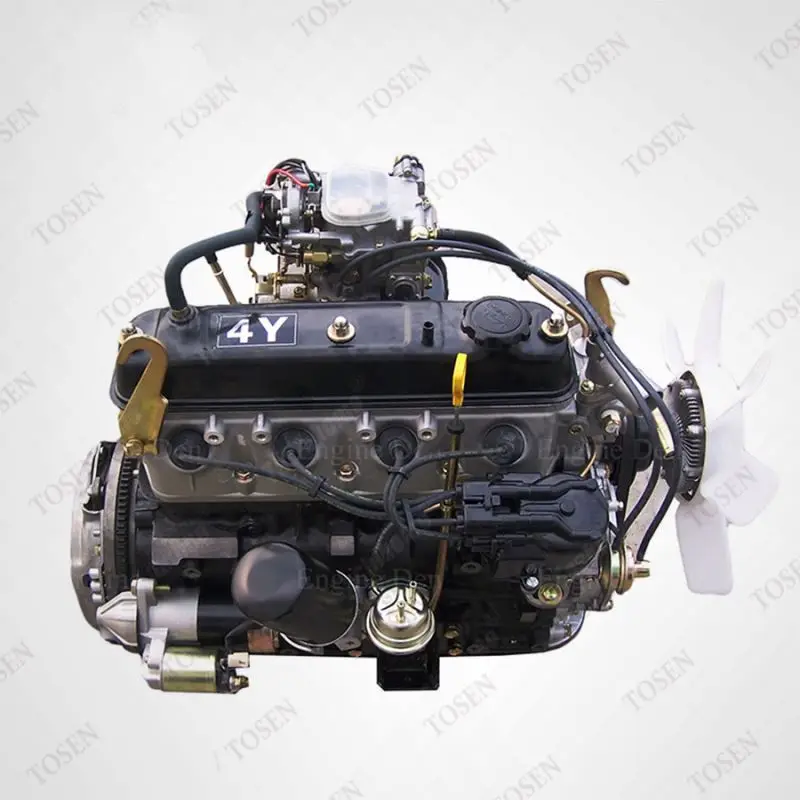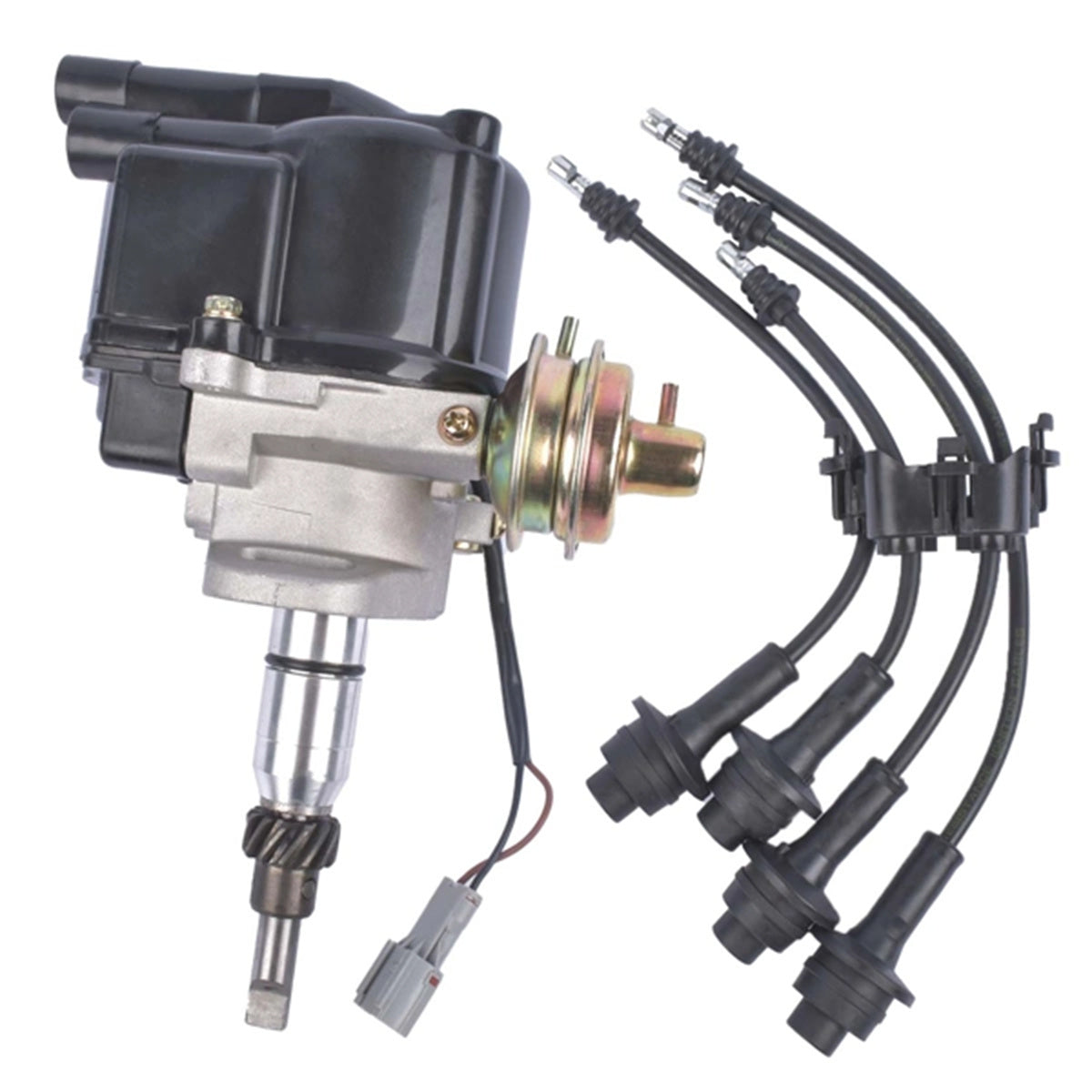Exploring the Benefits of the 4Y Engine for Automotive Enthusiasts
Exploring the Benefits of the 4Y Engine for Automotive Enthusiasts
Blog Article
Why the Engine Is the most effective Selection for Performance and Efficiency in Your Vehicle
The engine remains an essential component in auto style, largely because of its substantial impact on both performance and performance. As developments in modern technology allow smaller sized engines to deliver impressive power while optimizing gas economy, the combination of attributes such as turbocharging and hybrid systems ends up being significantly vital. These advancements not just enhance driving experience however additionally address environmental issues. However, the concern develops: just how do these elements coalesce to redefine our understanding of vehicle efficiency? Exploring this balance exposes much deeper understandings right into the future of engine layout.
Comprehending Engine Kind
Comprehending the numerous sorts of engines is critical for optimizing efficiency and performance in automotive design. The key engine types include internal burning engines (ICE), electrical engines, and crossbreed systems, each offering unique benefits and constraints.
Inner combustion engines, which can be further categorized into gas and diesel variations, count on the combustion of fuel to produce power. Fuel engines usually provide higher RPMs and better acceleration, while diesel engines are known for their torque and fuel efficiency, making them ideal for heavy-duty applications.
Electric engines, on the various other hand, utilize electric motors powered by batteries or gas cells. They offer instant torque shipment, resulting in smooth acceleration and lower emissions. The efficiency of electrical engines is significantly higher than that of ICEs, making them a preferred selection for eco-conscious customers.
Hybrid systems incorporate both inner burning and electrical engines, leveraging the staminas of both innovations. They maximize fuel consumption by using electrical power at reduced speeds and switching over to gas or diesel for higher rates or heavier loads.
Choosing the appropriate engine type is essential for attaining wanted performance metrics and environmental sustainability in modern auto engineering.
The Impact of Engine Size
Engine size often plays an essential role in identifying a vehicle's efficiency and performance. Generally determined in liters or cubic centimeters, engine dimension straight affects the power result and torque qualities of an automobile.
Nonetheless, raised engine dimension frequently correlates with reduced gas performance. Bigger engines eat even more gas, bring about greater exhausts and functional prices. Manufacturers should balance the demand for power with the requirement for gas economic situation. Smaller engines can deliver sufficient performance for daily driving while promoting better effectiveness, making them a preferred selection in mid-size and compact vehicles.
In addition, advancements in engine design, such as turbocharging and direct fuel shot, enable smaller sized engines to attain power levels similar to their bigger equivalents. This fad emphasizes the importance of not exclusively concentrating on engine size however likewise considering overall vehicle layout and innovation (4y engine). Eventually, the impact of engine size on efficiency and efficiency highlights the requirement for consumers to analyze their details driving choices and requirements when selecting a vehicle
Advanced Engine Technologies
Advancements in engine modern technologies have considerably reshaped the landscape of automobile performance and effectiveness, building upon the foundational ideas developed by engine dimension. Especially, developments such as turbocharging and straight fuel injection have made it possible for smaller sized engines to provide power degrees previously related to larger counterparts. Turbochargers you can check here compress air getting in the engine, permitting raised power result without an equivalent rise in engine dimension, while straight shot optimizes fuel shipment, enhancing burning effectiveness.
Furthermore, variable shutoff timing systems have actually become a crucial technology, enabling engines to change valve operation based on driving conditions. This adaptability improves both efficiency throughout velocity and gas performance throughout travelling. Crossbreed and electrical engine modern technologies better highlight the change in auto style, integrating standard interior combustion engines with electric motors to make best use of efficiency while reducing emissions.
Furthermore, developments in materials science have brought about lighter, more resilient engine elements, even more enhancing performance and longevity. The combination of sophisticated electronic devices and engine control units also permits real-time adjustments, guaranteeing optimal performance throughout numerous problems. Jointly, these sophisticated engine technologies not only improve car performance but also add to a much more sustainable automotive future, showing the continuous evolution of engine layout.
Harmonizing Power and Efficiency
Striking an equilibrium between power and performance is critical in contemporary automotive style as producers look for to satisfy significantly rigid emissions laws while satisfying customer demand for efficiency (4y engine). The challenge depends on optimizing engine features to provide robust power outcome without giving up fuel economic situation
To accomplish this equilibrium, engineers use various approaches, such as turbocharging, which enhances engine power by compeling in more air, enabling for a smaller sized engine displacement that enhances gas efficiency. Variable shutoff timing technologies additionally play a substantial function, allowing engines to adjust their performance characteristics based on driving problems, consequently improving both power and performance.
Moreover, innovations in materials and producing methods have actually led to lighter engine components, which decrease general automobile weight and boost gas efficiency without compromising power. Hybrid innovations have likewise become a feasible remedy, incorporating traditional internal burning engines with electrical powertrains to provide a boost in performance while maintaining lower emissions.

Future Fads in Engine Style

Moreover, the growth of sophisticated materials, such as light-weight composites and high-strength alloys, is established to reinvent engine elements. These materials not just minimize weight but additionally enhance thermal efficiency, thus enhancing efficiency. In addition, makers are exploring variable compression ratios, enabling engines to adapt to various driving conditions, boosting both power output and gas economic climate.
Even more, the surge of expert system and artificial intelligence in engine layout is allowing predictive maintenance and real-time performance optimization. This innovation can lead to engines that self-adjust for optimal efficiency based on driving patterns.

Final Thought
In final thought, the engine serves as a critical component in achieving optimal performance and efficiency in modern cars. The interplay between engine dimension and layout proceeds to evolve, driving developments that balance exhilarating efficiency with ecological sustainability.
Furthermore, developments in engine design, such as turbocharging and straight gas injection, allow smaller sized engines to attain power degrees comparable to their larger equivalents.Advancements in engine technologies have actually significantly improved the landscape of auto efficiency and effectiveness, building upon the fundamental concepts developed by engine size. Turbochargers compress air getting in you could try this out the engine, enabling for increased power outcome without a matching rise in engine size, while straight injection optimizes gas delivery, improving combustion performance.
Hybrid and electrical engine technologies better show the change in automobile layout, integrating typical interior burning engines with electric motors to make the most of performance while decreasing exhausts.
Collectively, these innovative engine technologies not only boost car efficiency but likewise add to a more sustainable auto future, demonstrating the continuous advancement of engine design. (4y engine)
Report this page